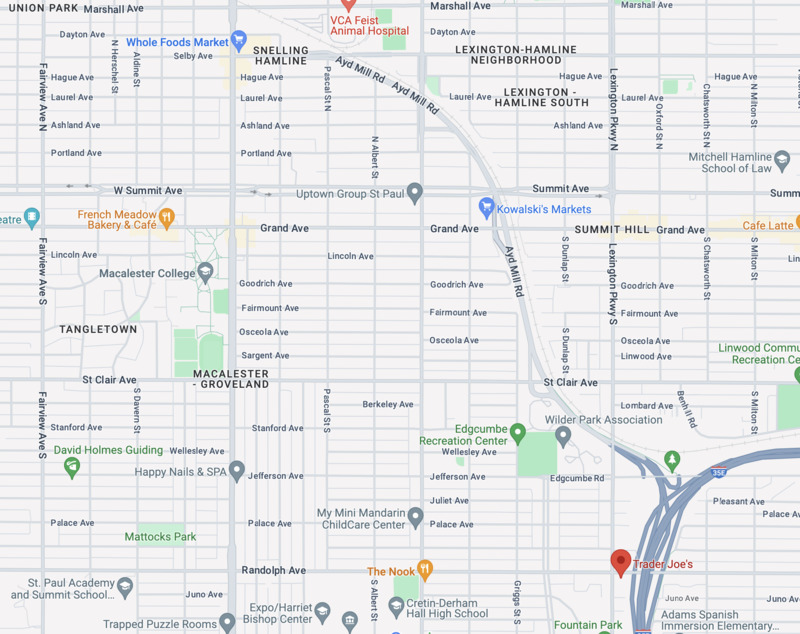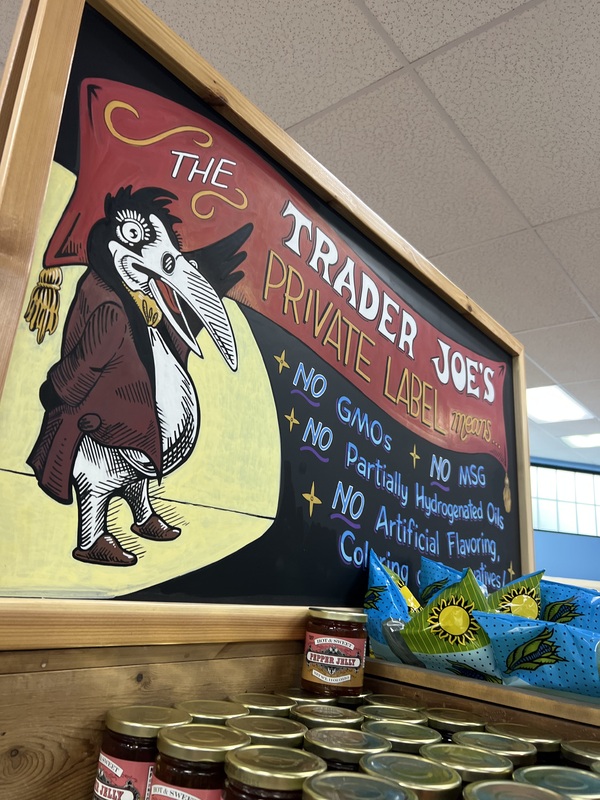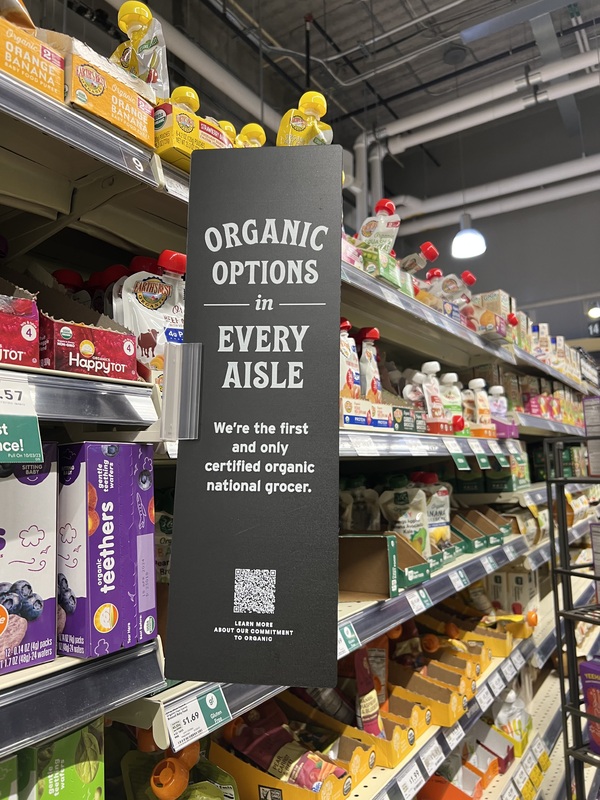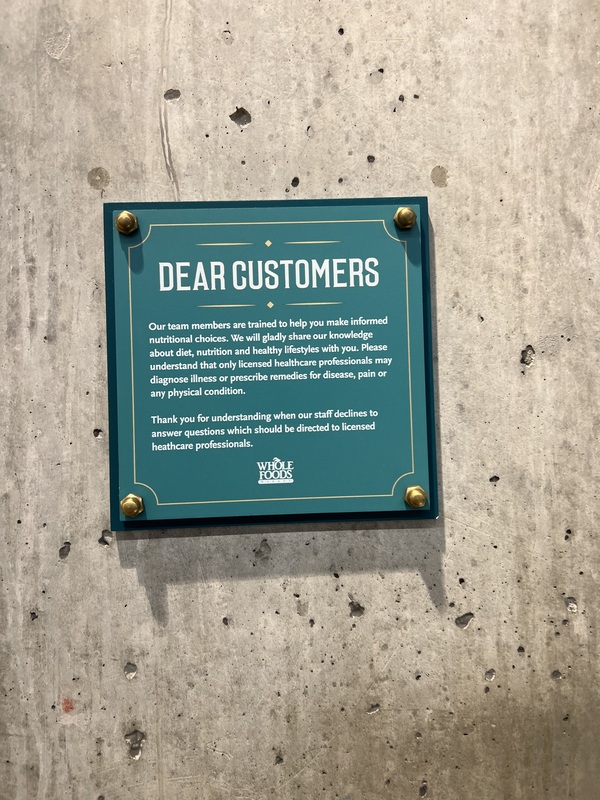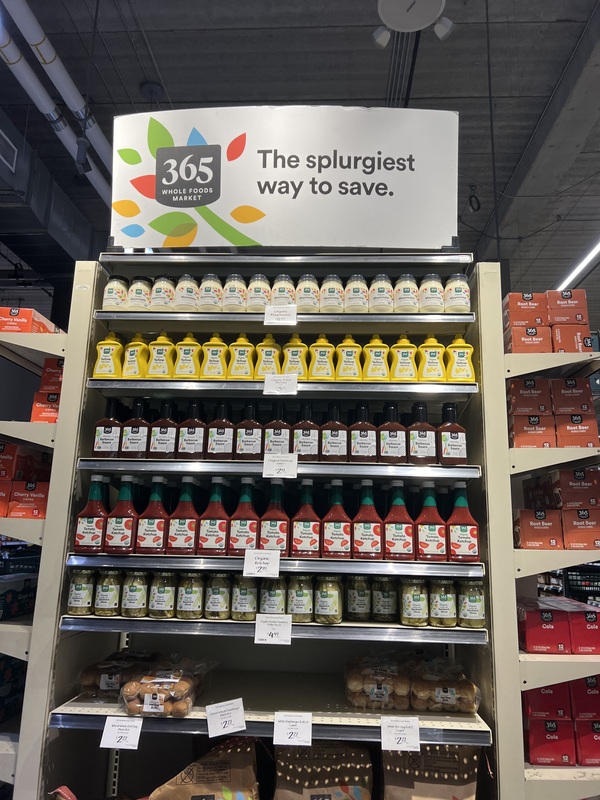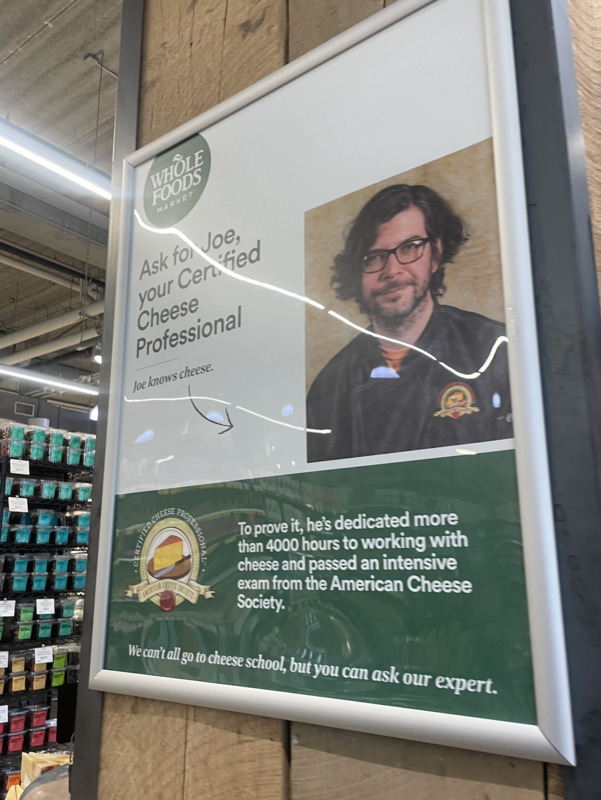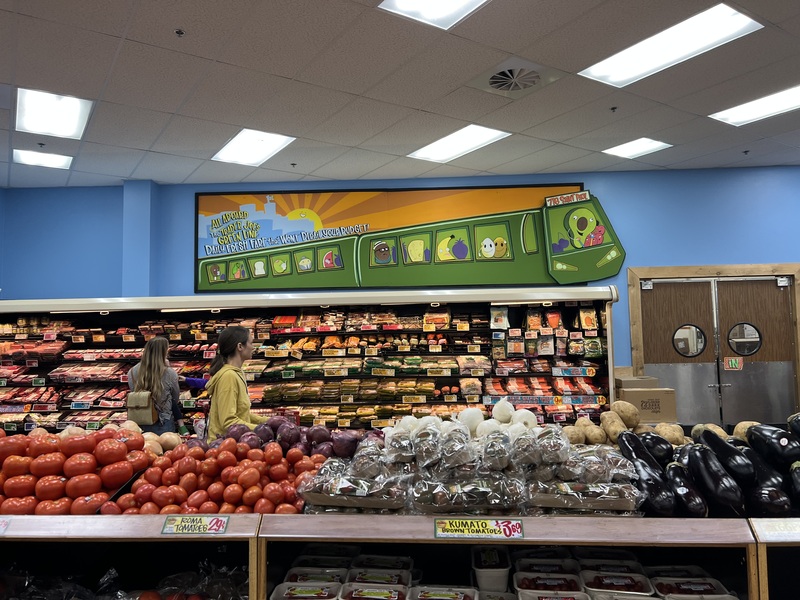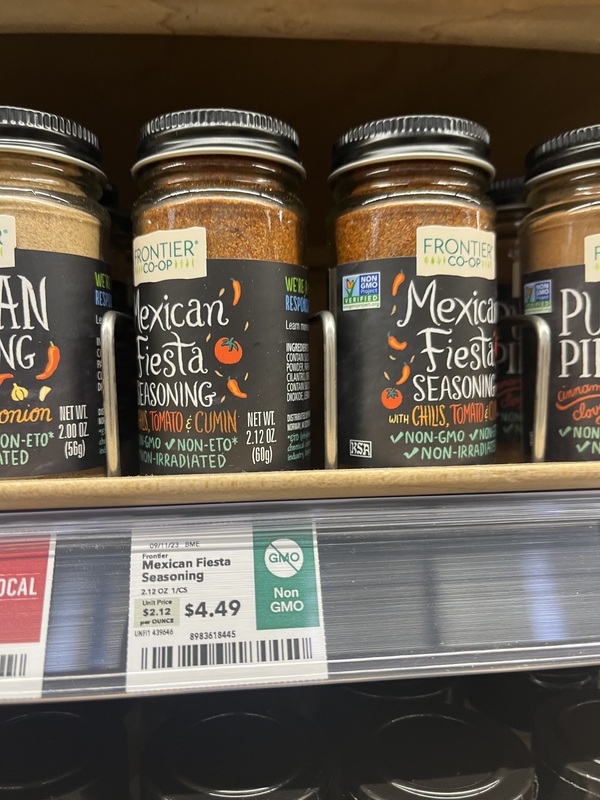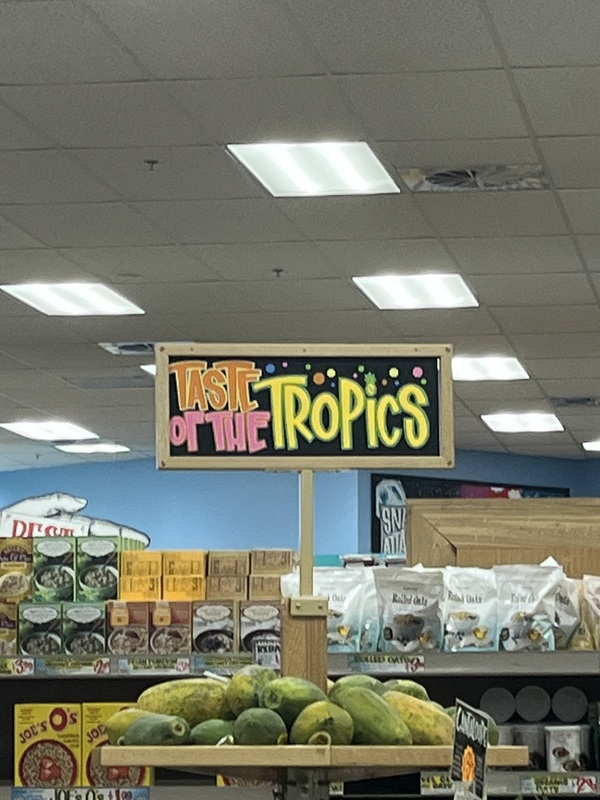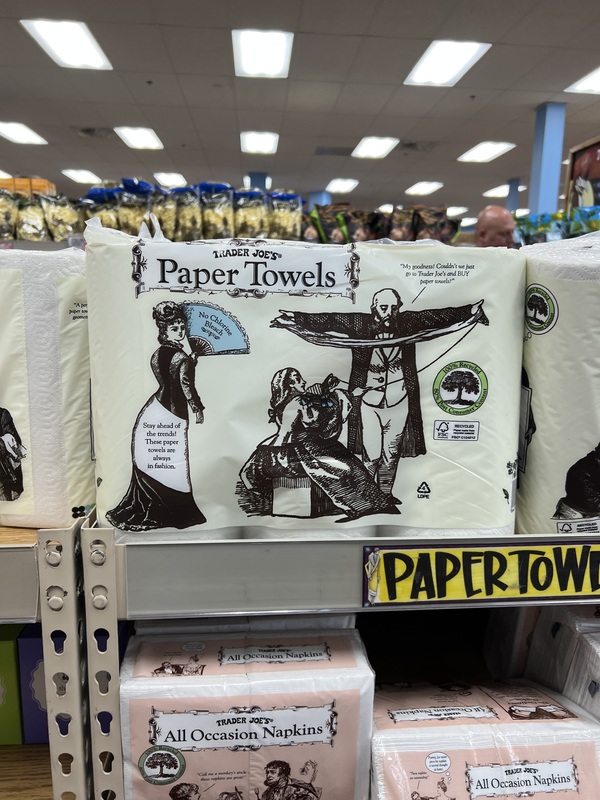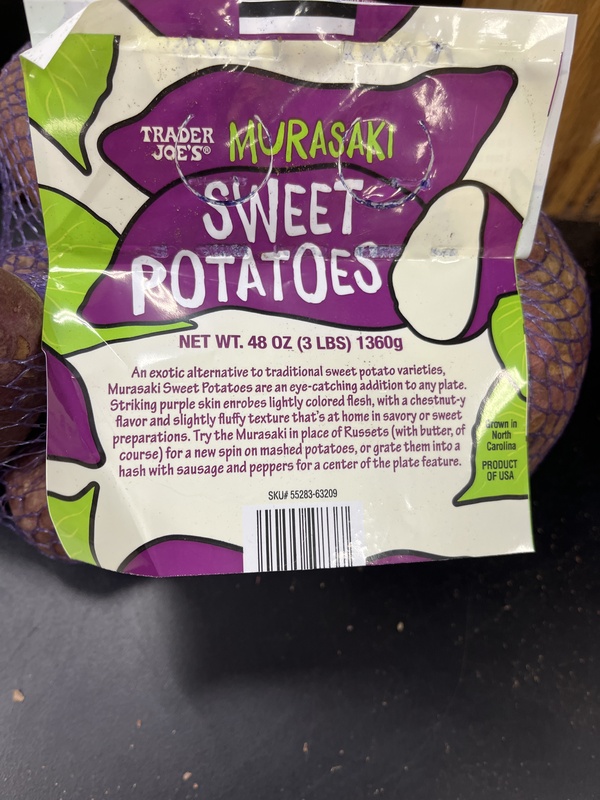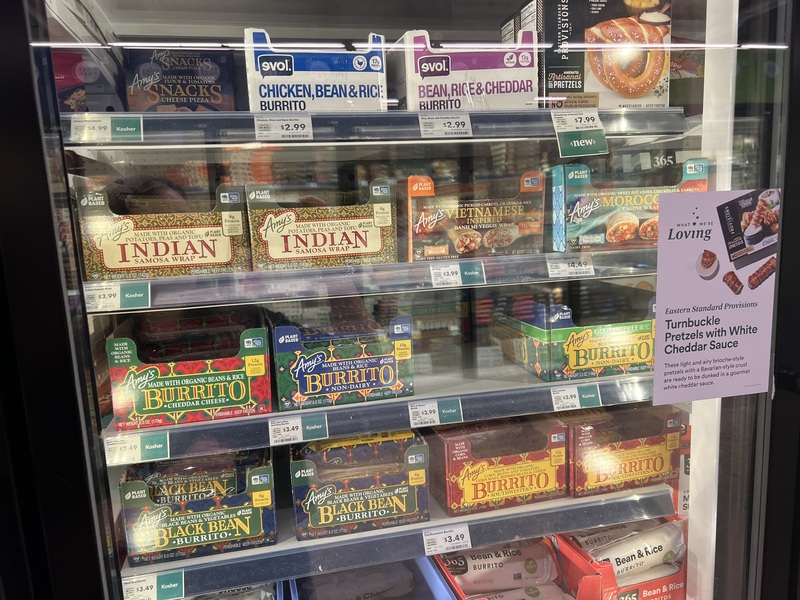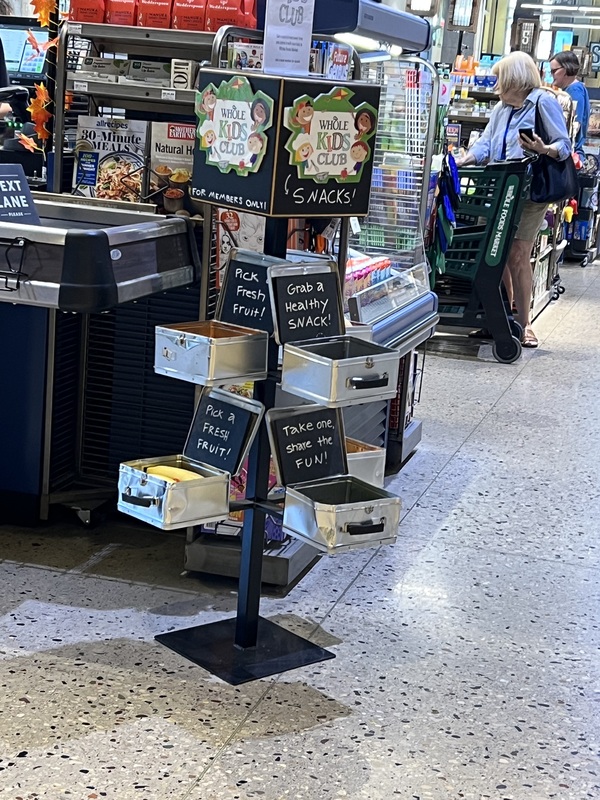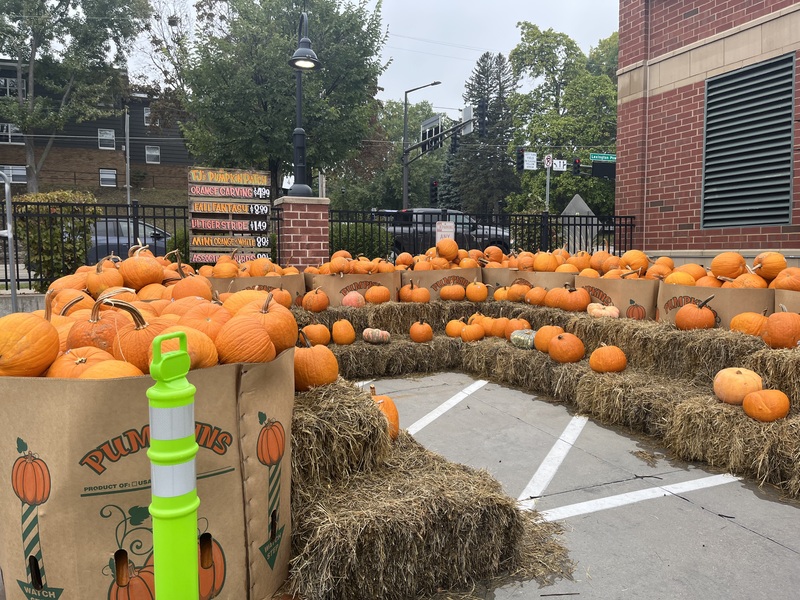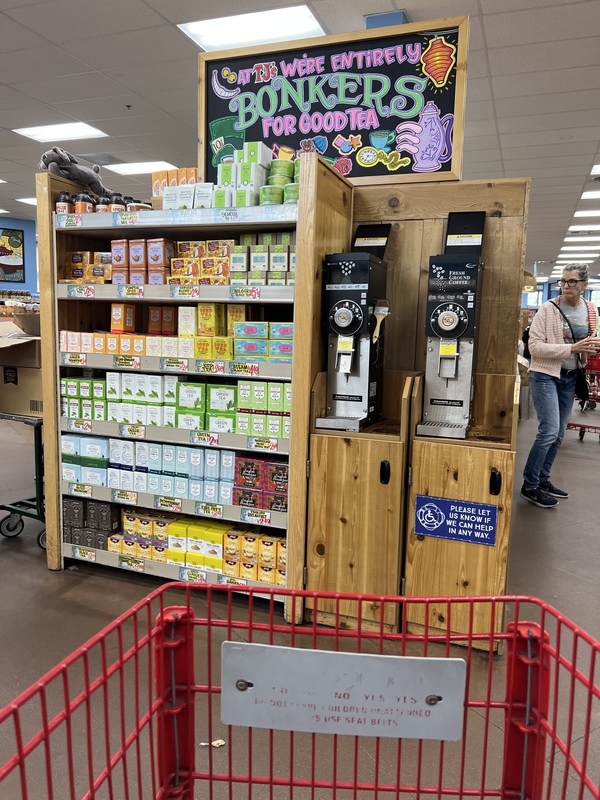Expanding the Racial Grammar through the Lens of Consumption: Whole Foods and Trader Joe's
We are viewing Mac-Groveland through the lens of consumption. Through ethnographic observation and interviews with Mac-Groveland residents, we ask: how can we expand upon concept of Bonilla-Silva’s racial grammar in order to incorporate class, gender, and normative expectations of family roles into our understandings of the racialized nature of two Mac Groveland grocery stores?
Our observations revealed how Mac-Groveland consumer staples, namely, Whole Foods and Trader Joe’s, serve as spaces within which upper-/middle-class norms and normative familial structure (i.e.; the nuclear family) are reproduced implicitly through social interactions and the intentional choices of the stores, from decorations to stocks of items. Using our observations and interviews with residents and employees of these stores, we argue that the way these norms are reproduced mirrors the way racial grammar is transmitted and reinforced silently and without question. Thus, we ultimately argue that class and gender normativity works in tandem with white supremacy to maintain the broader status quo.
Whole Foods
Whole Foods is a grocery store in the Mac-Groveland neighborhood, located on the corner of Selby and Snelling. "From the industrial cement parking lot into the industrial cement grocery store," (Coney Interview) this high-price-store boasts its large variety of organic, healthy options that customers can only find there Additionally, the store lends a focus on global foods Some local residents, like Macalester students, perceived the grocery store to be too expensive or impractical and impersonal in its formulaic green-washing aesthetic that calls to mind the performance of values like equity and environmentalism.
Trader Joe’s
On the edge of Mac-Groveland at the corner of Lexington Avenue and Randolph avenue sits Trader Joe’s. Based on what we observed, it is the family-oriented, more affordable, and “just fun” grocery store in the neighborhood. Trader Joe’s brand specialty items evoke a sense of exclusivity when shopping at this store. Trader Joe’s employees seem to have a camaraderie that other stores don’t have, making the customer employee dynamic more casual and approachable. The shelves in the store are decorated with colorful packaging inviting you to “sail the culinary seas” with its variety of store brand international options. The bright energy can make a grocery trip to Trader Joe’s overstimulating and their intentionally exploratory fusion food options often toe the line of exoticization.
Interview with Macalester student & previous Whole Foods employee
“I don't shop at Whole Foods, if I can help it.”
“Is there a reason why the closest grocery store to you isn't the one that you shop at the most?”
“Yeah. I think Whole Foods is overpriced. Or I can get a lot more food at Target for the same amount of money.”
-------------------
Throughout our participant observation and interviews, we uncovered a theme that Whole Foods and Trader Joe’s both make assumptions of the class standing of its customers. As discussed in the above section, this begins in the way that Trader Joe’s and Whole Foods focus on highlighting the exotic. Meanwhile, the quote I have presented is from an interview with a student at Macalester who also worked at Whole Foods for a short summer job. In multiple interviews with Macalester-Groveland residents who encounter these two stores in their daily lives, a common theme of the typical shoppers at Trader Joe’s and Whole Foods being “White and probably upper class or upper middle class” with “a lot of extra expendable income” came up quite a lot. The idea of Mac-Groveland consumers as more well-off than others in terms of socioeconomic status was further corroborated in our observations. We included some photos in this exhibit to demonstrate how Trader Joe’s and Whole Foods are often catering to customers who are more likely to spend money on various grocery items that many interviewees said could be found for cheaper elsewhere. Additionally, both grocery stores focused on marketing rhetoric that centered health, drawing a boundary between consumers who have the time and money to focus on things like organic, preservative-free foods instead of simply trying to sustain themselves. This implicit understanding of what Whole Foods and Trader Joe’s offers excludes those who cannot afford to take such considerations in their food consumption choices.
Interview with Mac-Groveland Resident and Patron of Both Stores:
“How would you describe a typical Mac-Groveland resident?”
“I would say, you know, people that like to celebrate or maybe even take bits of culture that excite them. Because otherwise their lives are a little bit boring.”
-------------------
Whole Foods and Trader Joe’s both emphasize an idea of multiculturalism through their exoticized products that prompt you to venture outside your comfort zone for something “ethnic.” When the “ethnic” food options are identifiied as the other, there is a tacit assumption that the primary customer of these stores is the white shopper. The branding of several of both stores’ products or sections in the store market this idea with labels that broadly read “International Aisle” and descriptions that promote “an exotic alternative.” The imagery often utilizes bright colors and eye-catching designs that suggest that this food item is different from the norm. Though these products seem to emphasize the availability of non-Western foods in an American grocery store, we observed that BIPOC shoppers would often enter the International aisles and leave having not found what they were looking for while white shoppers tended to leave the aisle with products in the baskets. These products are not selected with BIPOC shoppers in mind and instead center white shoppers, effectively excluding BIPOC shoppers from feeling comfortable in the grocery store. None of these exoticizing tactics are necessary for the sale of the product and tend to be extractive of non-white cultural elements for the benefit of the assumed white shopper.
Legacies of colonialism were also present in the marketing of these stores. Colonialism in these grocery stores places the past at the center by grounding the available food and imagery used to market it in colonialism. Ther symbolism of products like the toilet paper in Trader Joe’s is evocative of a “historical charm” that disregards the social conditions of the time period which, while it may initially seem harmless, work towards the perpetuation of raced, classed, and gendered hierarchies.
“I think it's a store for families, definitely. I see both men and women there but I would say more women. I don't know whether that's just because more women do the grocery shopping for their family or because it's a Trader Joe's thing, but I would just say, yeah, like white women is - among all ages - is kind of the main demographic I would say I see at Trader Joe's.” - Interview A
“It mixes in between a mom and a dad. I feel like I've seen both pretty frequently. But it's, I think it's pretty much always a single parent. I'm assuming if, I mean, if they're not married, I'm assuming they're just like picking their kid up from school and going to the grocery store or something like that.” - Interview B
-------------------
Both of these stores advertise themselves as family-oriented through elements such as the Whole Foods “Kids Club”, the Trader Joe’s interactive “Find the Stuffed Animal” game, and the colorful atmosphere of Trader Joe’s as a “Food Safari!” By looking at the interactions that occur between the customer base and the stores themselves, a pattern of gendered consumption emerged as well as an unsaid expectation of normative gender roles. While observing the stores, we saw a lot of women, presumably mothers, shopping with young children. Most of which were white women. Much of this observation occurred mid-day during the workweek, evoking the image of the white stay-at-home mom and the unsaid expectation that she has a nuclear family who she is shopping for.
In our interview, A said that his dad does most of the shopping for his family. Despite this, he still alluded that women do most of the grocery shopping and further that grocery shopping is an activity seen as appealing to women “among all ages”. In my interview with B, he alluded to the belief that Trader Joe’s appeals to younger people and is a trend “especially on social media” also while noting that he still does see a lot of parents there when he shops, which is typically in the afternoons after school. He also drew on his experience of enjoying going to Trader Joe’s as a small child with his mom and playing the “Find the Monkey” game. This points to a juxtaposition occurring between the inherent view of these grocery stores as catering towards families regardless of whether or not people outside of nuclear family structures are seen shopping there, and emphasizing women’s role as being the one who shops at these stores for the family.
